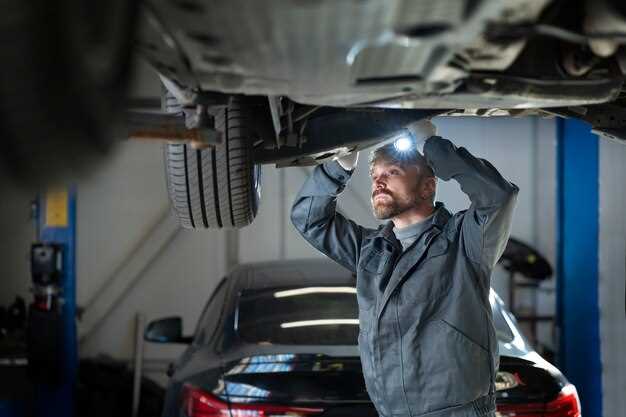
Driving at night can pose significant challenges, particularly when it comes to visibility on the road. One of the most critical components affecting night driving is the condition of your headlights. Over time, headlight lenses can become foggy or yellowed, drastically reducing their effectiveness. This deterioration can lead to decreased light output, making it more difficult to see other vehicles, pedestrians, and road signs in low-light conditions.
Fortunately, headlight restoration is an effective solution to revive your vehicle’s lighting system. This process not only enhances the clarity of your headlights but also improves overall driving safety during nighttime travel. By removing built-up grime and oxidation, restoration allows for maximum light penetration, ensuring that you and your passengers can navigate the roads confidently and safely.
In this article, we will explore the various techniques and benefits of headlight restoration. We will also discuss how investing time in maintaining your headlights can significantly improve your night driving experience and reduce the risk of accidents caused by poor visibility. Whether you choose DIY methods or professional services, clear headlights can make a world of difference on night journeys.
Identify Signs of Headlight Damage for Safer Night Driving
Ensuring the safety of your nighttime driving hinges significantly on the condition of your headlights. Recognizing the signs of headlight damage is crucial for optimal visibility and overall road safety. Here are key indicators to watch for:
Firstly, cloudy or yellowed headlight lenses can drastically reduce light output and effectiveness. This discoloration often results from UV exposure and environmental factors. If you notice a hazy appearance, it’s time for maintenance or repairs.
Secondly, flickering headlights can signal electrical issues or a dying bulb. Consistent flickering not only affects visibility but also indicates potential safety hazards. It is vital to address this promptly to ensure reliable lighting during night drives.
Additionally, uneven light distribution is a critical sign of headlight misalignment or damage. If one headlight appears dimmer than the other, you may be facing a broken reflector or internal component damage, compromising your safety on the road.
Moreover, physical cracks or chips in the headlights should not be overlooked. Such damages can lead to moisture ingress, which further deteriorates bulb efficiency and poses a safety risk during adverse weather conditions.
Lastly, check for condensation inside the headlight housing. This buildup often indicates a seal failure, allowing moisture to enter. This can lead to rust, corrosion, and ultimately, brighter repair costs while jeopardizing your visibility.
By being proactive and vigilant about these signs of headlight damage, you can ensure safer night driving experiences. Regular inspections and timely repairs can significantly enhance your safety on the road.
Step-by-Step Guide to Headlight Restoration Techniques

Restoring your headlights can significantly improve nighttime visibility and enhance the overall safety of your vehicle. Follow these effective techniques to ensure your headlights shine brightly and clearly.
Step 1: Gather Necessary Materials
Before starting the restoration, collect the following items: headlight restoration kit, sandpaper (grit levels 400, 800, and 2000), masking tape, microfiber cloth, and a clean water source. Having all the necessary tools on hand will streamline the process.
Step 2: Prepare the Area
Park your vehicle in a shaded area, as direct sunlight can lead to faster drying times and uneven results. Use masking tape to protect the surrounding paint from scratches and keep the work area clean.
Step 3: Clean the Headlights
Use soap and water to thoroughly clean the surface of the headlights. Remove any dirt, grime, or debris to ensure the restoration products adhere properly. Dry the headlights with a microfiber cloth to avoid streaks.
Step 4: Sand the Headlights
Begin with 400-grit sandpaper to remove the top layer of oxidation. Wet the sandpaper and gently sand the headlight in a circular motion. Rinse the headlight frequently to prevent debris build-up. Once the surface appears smooth, switch to 800-grit and repeat the sanding process to refine the surface further. Finally, use 2000-grit sandpaper for a polished finish.
Step 5: Apply Restoration Solution
After sanding, dry the headlights completely. Apply a headlight restoration solution, as per the product instructions. Ensure you evenly coat the entire surface. This step helps to restore clarity by adding a protective layer against UV rays and oxidation.
Step 6: Buff the Headlights
Using a clean microfiber cloth, gently buff the headlights in circular motions until the solution is fully absorbed and the headlights gleam. This process aids in increasing transparency and strengthening the protective finish.
Step 7: Final Touches
Once the restoration solution is dry, remove the masking tape carefully. Inspect the headlights to ensure they are clear and shining. If necessary, you can repeat any earlier steps to achieve the desired result.
Step 8: Regular Maintenance
To maintain your restored headlights, regularly clean them and apply a UV protectant to minimize future oxidation. This proactive approach will keep your headlights bright and functional for longer periods.
By following this step-by-step guide, you can effectively restore your headlights, ensuring safer night driving and improved vehicle aesthetics.
Regular Maintenance Tips to Enhance Headlight Longevity

To ensure your headlights remain effective and safe, regular maintenance is crucial. One key practice is to clean your headlights frequently. Dirt, grime, and road debris can accumulate, leading to diminished light output. Use a soft cloth and a mild detergent solution to wipe the surface, avoiding harsh chemicals that may cause damage.
Consider performing a headlight restoration when you notice cloudiness or yellowing. Kits are available that can effectively restore the clarity of plastic lenses, enhancing visibility during night driving. This restoration not only improves safety but also lengthens the lifespan of the headlights.
Additionally, inspect your headlights regularly for any signs of moisture or fogging inside the lens. Moisture can indicate a broken seal, which may lead to further degradation. If you find any issues, address them promptly to prevent damage.
Make it a habit to check the alignment of your headlights as well. Misaligned headlights not only reduce visibility but can also blind oncoming drivers. Regular adjustments can ensure that the light beam is focused properly, increasing both safety and functionality.
Lastly, always check the bulb condition and replace any burnt-out bulbs immediately. Old or weak bulbs can compromise light output, making it essential for safe night driving. By following these maintenance tips, you can enhance the longevity of your headlights, ensuring optimal performance and improved road safety.






